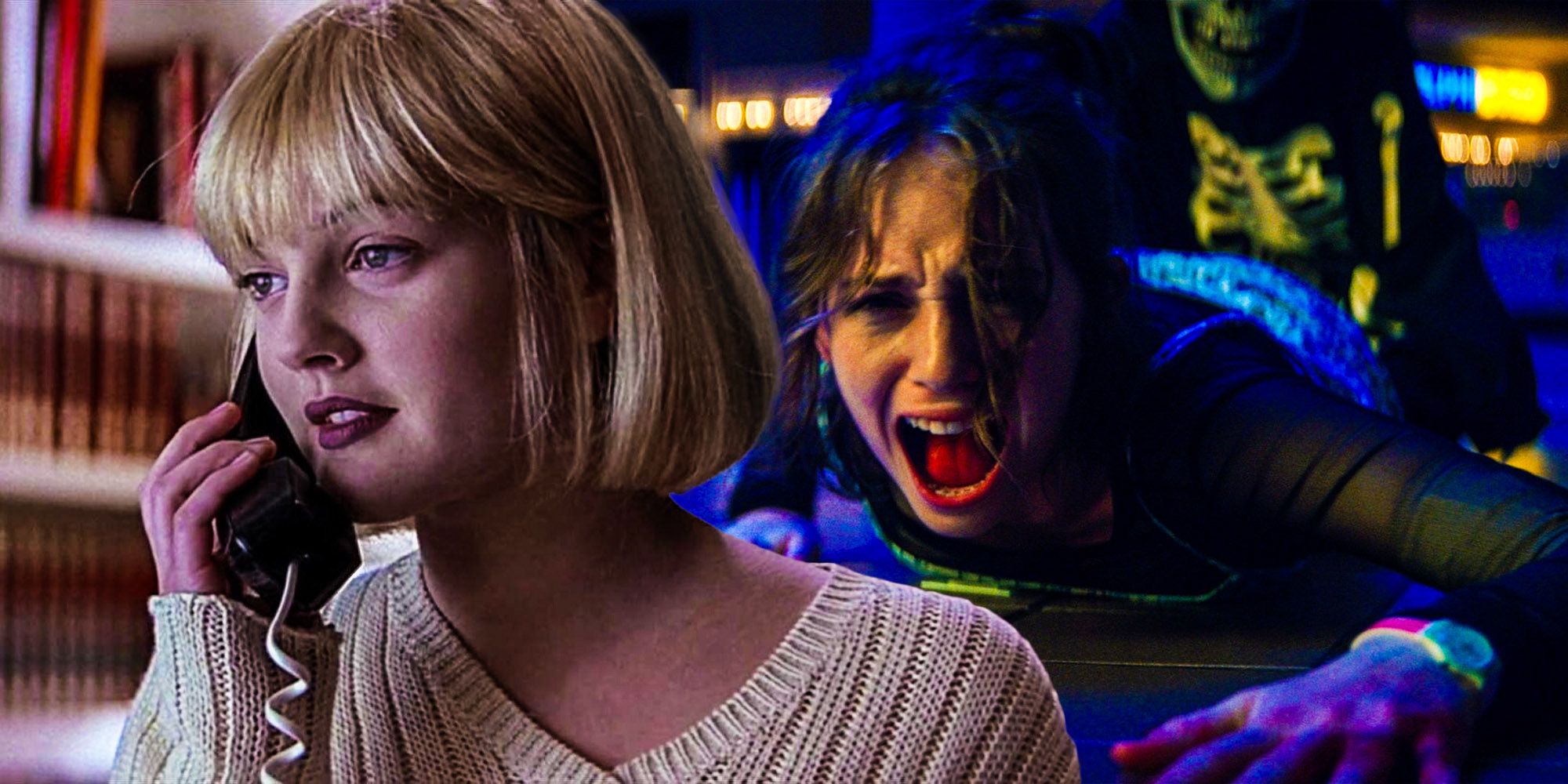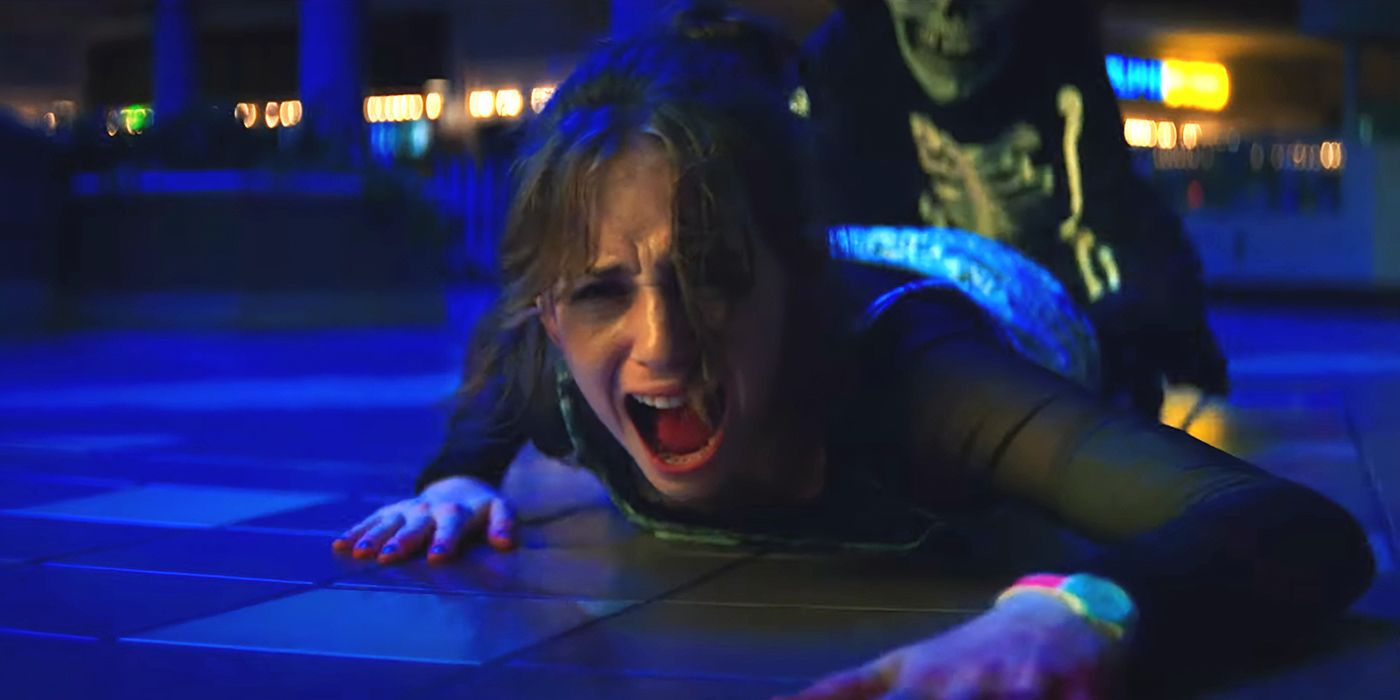Fear Street Part One: 1994 carries on the opening scene tradition of slasher films. Since the '70s, genre filmmakers have prioritized bloody mayhem in the opening minutes — it's a way to immerse the audience into the experience while playing with the usual horror tropes. Netflix's Fear Street trilogy pays homage to the past, and then moves the genre in a new direction with its unorthodox release strategy.
Many psychological thrillers or mainstream horror films make the audience wait for a big reveal or character kill. That's not the case, however, in slasher flicks like Halloween, The Hitcher, Texas Chainsaw Massacre 2, and so many more. Of course, Wes Craven's 1996 classic Scream subverts expectations, as Drew Barrymore's Casey Becker chats with a mysterious individual about horror movies and gets slashed to death moments later. In Fear Street Part One: 1994, director Leigh Janiak and co-writer Phil Graziadei deliver another classic opening scene in the slasher sub-genre.
Fear Street Part One: 1994 references Scream during its opening sequence. As Heather Watkins, young starlet Maya Hawke essentially plays a modern version of Barrymore's Casey Becker, only the location shifts from a contained house to an open mall. She also receives a phone call and carries on a conversation with the person who is revealed to be the killer (David W. Thompson as Ryan Torres). In Scream, Casey is ultimately hung from a tree, just like Fear Street's main antagonist, Sarah Fier (according to a local legend). The films differ, however, in the execution of the opening attack scenes. Whereas Scream's killer keeps a mask on before Casey dies, Fear Street Part One: 1994's opening-scene villain, Ryan, reveals himself to Heather. It's then quickly revealed that the killer was possessed by the Shadyside Witch, Sarah Fier, portrayed by Elizabeth Scopel.
Aesthetically, the opening scene in Fear Street Part One: 1994 seems inspired by Stranger Things, evidenced in part by its neon color palette. While that may be true, Dario Argento's 1977 Italian classic Suspiria (not to be c0nfused with the 2018 remake) also appears to be an influence, at least when considering its colorful and extended opening scene that builds to a character's death. Suspiria isn't quite a traditional slasher, but it did indeed pave the way for various sub-genre filmmakers during the '80s, especially in America. With Fear Street Part One: 1994's introductory sequence, Janiak and Graziadei blend the old school with the new; there's the aesthetic allure of Argento's movie Suspiria, the conceptual familiarity of Scream, and also an up-and-coming actress who would typically be the heroine of a modern horror film. Hawke receives little screen time yet arguably has the most instantly iconic scene in the movie.
Over time, Fear Street Part One: 1994's opening scene will take on new meanings. The second movie reveals that the Shadyside Mall was built on the same location where the Shadyside Witch, Sarah Fier, was hung three centuries before. It's also the same location of the Camp Nightwing massacre in Fear Street Part Two: 1978. So, not only does the opening scene in Fear Street Part One: 1994 carry on a slasher tradition, but also anchors the narrative by later revealing the true significance of the Shadyside Mall, and how it connects to the Fear Street trilogy as a whole.


